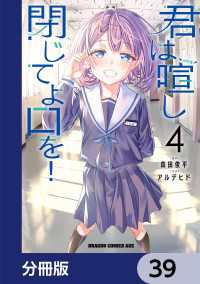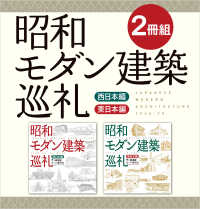- ホーム
- > 洋書
- > ドイツ書
- > Humanities, Arts & Music
- > History
- > regional history
Full Description
This book offers the first comprehensive analysis of the role of cinema in the communication strategy of the Italian Communist party (the PCI). It examines the entire period during which the party had a systematic and organized approach to cinematographic production, starting with the early experiments in 1946 and concluding with the closure of PCI film company Unitelefilm at the end of the 1970s. Its analysis sheds light on a range of issues, such as the relationship between the party and Italian intellectuals, the Stalinist imprint of the Italian Communist Party and the historical significance of the Salerno turn, the PCI's relationship with the student movements in 1968 and 1977, and the PCI's response to the rise in political violence in the 1970s. Ultimately, the book demonstrates that cinema was essential to the PCI's propaganda effort.
Contents
1. Introduction.- Part I The Italian Communist Party between Socialist Realism and Neorealism (1944-1956).- 2. Togliatti's Partito nuovo and Italian cinema.- 3. Socialist Realism Italian-Style: PCI Cinematic Propaganda in the Stalin Era.- Part II Dealing with The Modern (1956-1970).- 4. Peace and Sputnik, the Boom, and Television (1956-1964).- 5. The First Years of Unitelefilm and the PCI After Togliatti (1964-1967).- 6. The Workers, the Students, and The Election Campaign of 1968.- 7. The Lice and the Whale: Filmmakers, Militant Cinema and the Italian Communist Party.- Part III A Decade of Living Dangerously: The Turbulent Peak (and the Seeds of Decline) of the Italian Communist Party (1970-1979).- 8. The Early 1970s: Unitelefilm, the Fascist Threat, and the 'Historic Compromise'.- 9. Hegemony Within Reach (1974-1976).- 10. Women's Issues, Feminism, and the PCI.- 11. Hegemony Fades Away (1977-1979).- 12. Conclusion.








